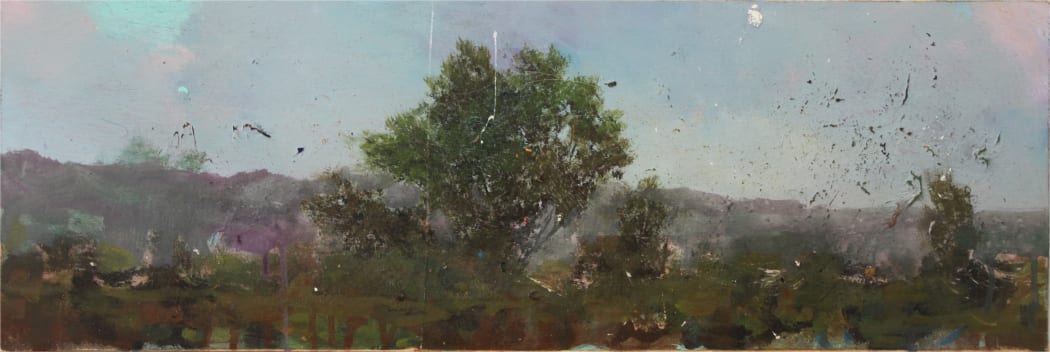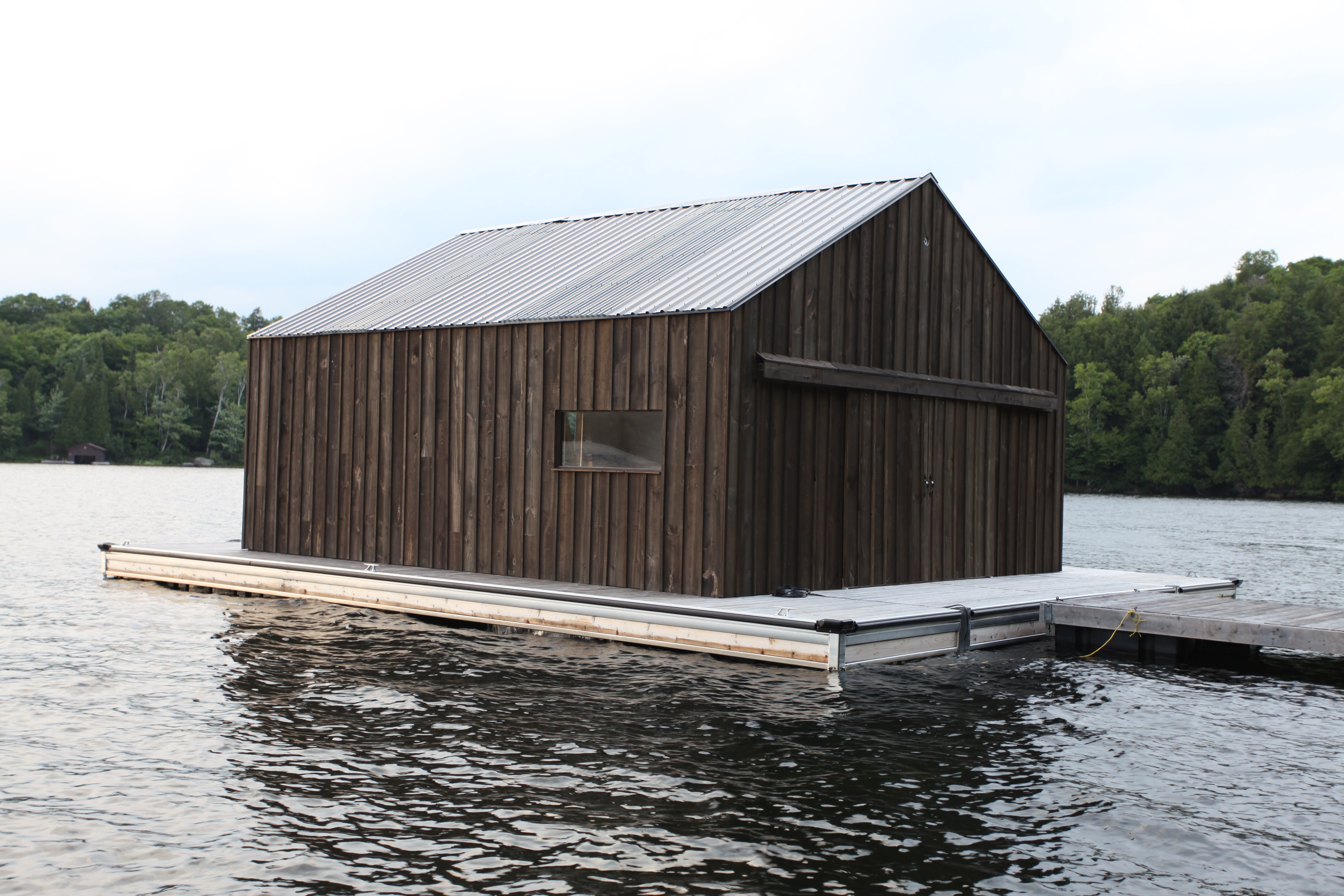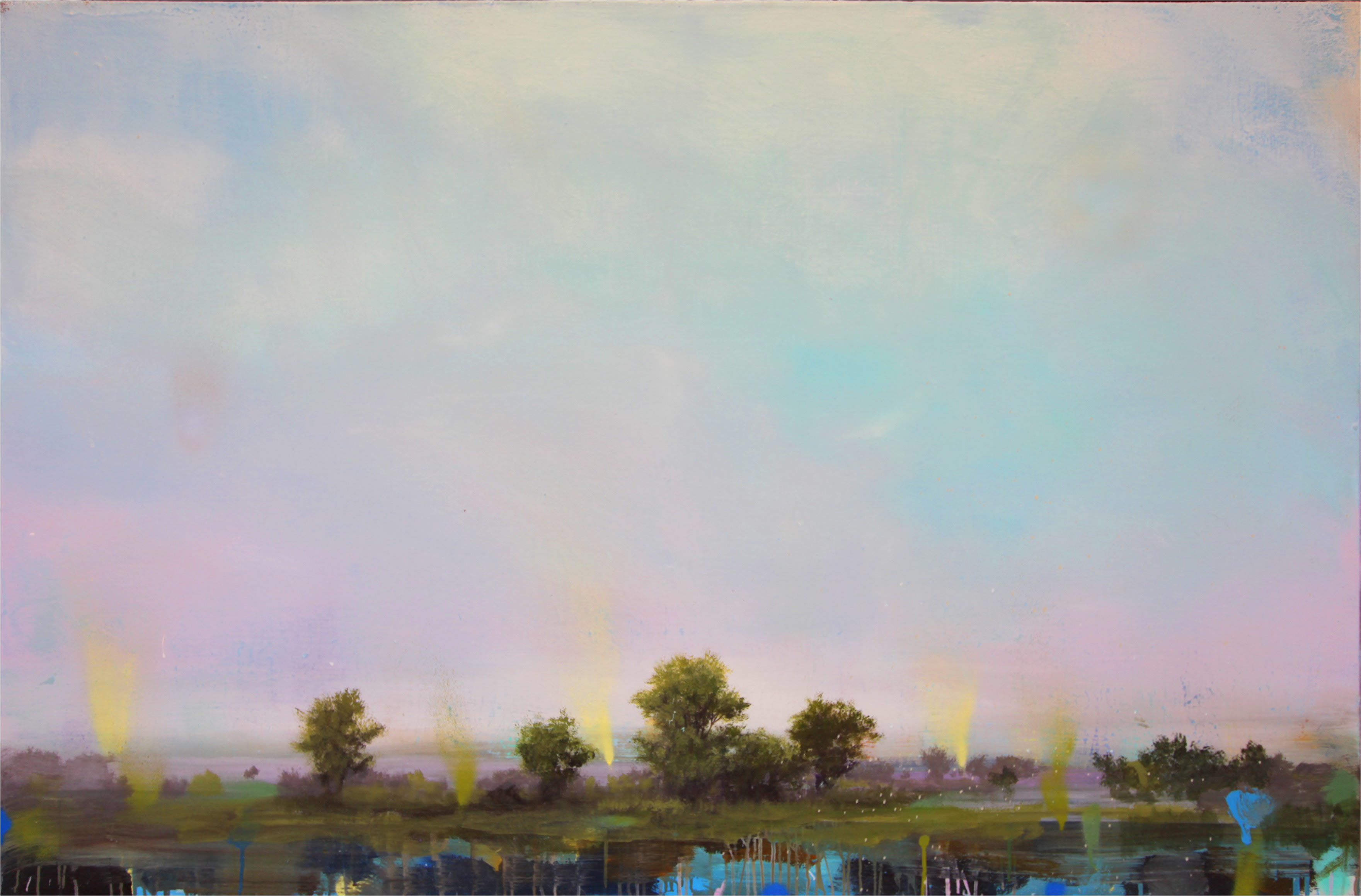
Every week, we'll be sitting down with one of our gallery artists to discuss their work, process, inspiration, and stories. This week we're speaking with Peter Hoffer.

"Edge"
Peter Hoffer's landscape paintings are full of contradiction. Their scenes are serene and, at first, appear traditional. Shining with a glossy finish, they present themselves as neatly packaged. But look closer at the surfaces and you'll see that they are distressed, intentionally imperfect. The painting has drips and inconsistent marks, and the surface layers are scratched, cracked, and seared with various levels of subtlety. The pieces have the sense of being uncovered, invoking a sense of abandonment or anticipation. The painterly aspects of his work have increased throughout the years, further toying with that balance of precious object d'art and raw emotional experience. Hoffer wrote us from Berlin to talk about his road from aspiring hockey player to painter, his refusal to believe that painting is dead, and the origin of his finishing technique.

Hoffer's boathouse studio, north of Montreal (Photo courtesy of the artist)
What are your earliest memories relating to art? When and how did you become an artist yourself?
My earliest memories go way back. In fact, I was expelled from grade school for drawing continually in class. If ever I saw a white page, it would be covered. My best source of paper was the lead pages and inside covers of books. We were brought up in a very suburban setting where the only source of "art" was decorative oil paintings from Holiday Inn art markets. We had a little girl on a swing under a sponge painted apple tree, wrapped in a decadent gold frame.
I went to a strict Catholic school with Benedictine nuns. The mean ones with the habits. We weren't afraid of the priests. We were afraid of the nuns. The images that covered the large Victorian church were quite spectacular, loosely based on Romantic-era religious murals. There was also an abundance of mass-produced Inuit art. I thought all of this stuff was awesome at the time, although now I look back at this kitsch and laugh at my naiveté and innocent acceptance of its artificial value. But I still consider it somewhat of an introduction and inspiration to my explorative sense.
My real passion career-wise was to play hockey, and I came close. But all the while I still found most enjoyment secluded in our home isolated in a basement room, drawing incessantly. I also had a nice introduction to pot, which is another blog perhaps, but it decided my fate between a career in hockey and my career in art.

"Cluster"
I should mention that my parents had divorced when I was about fourteen. Therefore I had an empty house to work out of (cheap studio space), and I needed money, so I began selling my drawings at an early age. Eventually these sales would pay my way through art school. Most of my work were landscapes and, oddly enough, horses. I would go off to a Toronto horse auction house, where the big money thoroughbreds were being sold. I would hang around the stables pre-auction and sketch the horses for the owners. (I never liked horses ).
From my upbringing and demographic, I never really knew, nor did anyone around me (including my art teachers), that there was the profession of being an artist. Outside of commercial art, there really was no understanding of how to become such a person. Unless you lived in Paris around the 1850's of course.
I loved drawing and painting, and although I spent nine years studying practice, history and theory in schools, I still consider myself self-taught. My education allowed me to stay out of the work force, except of course for the summer months. Enrolling in university and art college got me out of the 'burbs and into the city, where I naturally was exposed to real art and museums.
Were you always working with landscape, or was there an evolution toward that?
Although I loved painting and sculpture, my degree was in Theory and I was enrolled in Conceptual and Experimental Art. I created installation-based works as well as video. Keep in mind, from the mid-eighties on up until 2000, painting was dead and video and computer-based work was in. However I found much more challenge and inherent meaning in the gesture of painting, perhaps in part due to the confines of the material, than I did with video or photography.
My interest is still with the materiality of paint and the tactility of material. I found it was too forgiving to hide amongst technology, especially as it was in its prime. Technology gets demystified too fast nowadays. Painting is far more demanding and involves greater patience and attention.

"Current"
What are your inspirations and influences?
The Art Gallery of Toronto and the National Gallery were big on American Contemporary painters. This is where I found great inspiration. I love Abstract Expressionism as well as its counterpoint, Minimalism. The mid '80s debuted the "European Iceberg" movement that was extremely influential on my expressive technique at the time. It wasn't really until I moved to NYC in the mid '90s and frequented the Met, that I was exposed to the intricacies of 20th century American painting, and especially the nuances and subtle gesture of American landscape paintings. The Hudson School, as well as much of the large-scale panoramic scenes created during that time, were a revelation to me. Frederic Church, Thomas Cole and Winslow Homer were favorites. But it was not solely the great skill of these technicians, but the narrative involving the image and scene that I was now interested in. The controlled image of a landscape became more "conceptual" than what Conceptual Art was for me.
After moving to Montreal from NYC, I was again immersing myself in studying art history. This time I was concentrating on Romanticism and early 19th century European artists. Keeping with the subject of landscape, I was most drawn to artists like Constable, Turner of course, and importantly Poussin and Claude Lorrain. The French painters had a revolutionary way of presenting a narrative as well as clever methods of adding signifiers to their compositions.
What's your process like? What drew you to creating this technique with giving your paintings a glossy finish?
Le Vernissage or "The Varnishing" is the evening before an exposition, and that comes from when The Paris Salon School painters would gather the night before a show and apply new varnish to their canvases to make the works luminescent and appear newly painted. I was seduced by the idea of creating a series of paintings that were layered with repeated coats of varnish. As a result, these coatings would become so thick that the surface would overpower the image of the painting physically, because of its depth and visually because of its shine and discoloration.
From there I began a series of compositional landscapes that were held in a flux between degradation and abandon. I would create paintings in different states of retrograde as if they were antiquated works that were decomposing. The idea of nature or landscape paralleled with processes of art and value seemed best suited to each other. A simple tree painting becomes a meditation on a tree both as objet d'art and as a signifier to a natural tree.
Where do you see your work going from here?
There is an excitement in not knowing where my work goes from here. I am revisiting my painterly abstract past, though I don't believe I could ever give up landscape as a subject matter. Material and practice-wise, I intend on evolving my sculptural practice more as well as finishing a series of woodblocks. Currently, I am in Berlin to learn a few techniques and visit a few museums with various artworks that I adore.

"Printemps"
Explore more of Peter Hoffer's work here.
Comments
These are very nice paintings. The surface technique has unique appeal. In my career I see many modern paintings with leanings toward landscape traditions, yet only a few artists create as handsome a synthesis as Peter Hoffer. Best wishes for continued success.
William Hemmerdinger, MFA, Ph.D.
